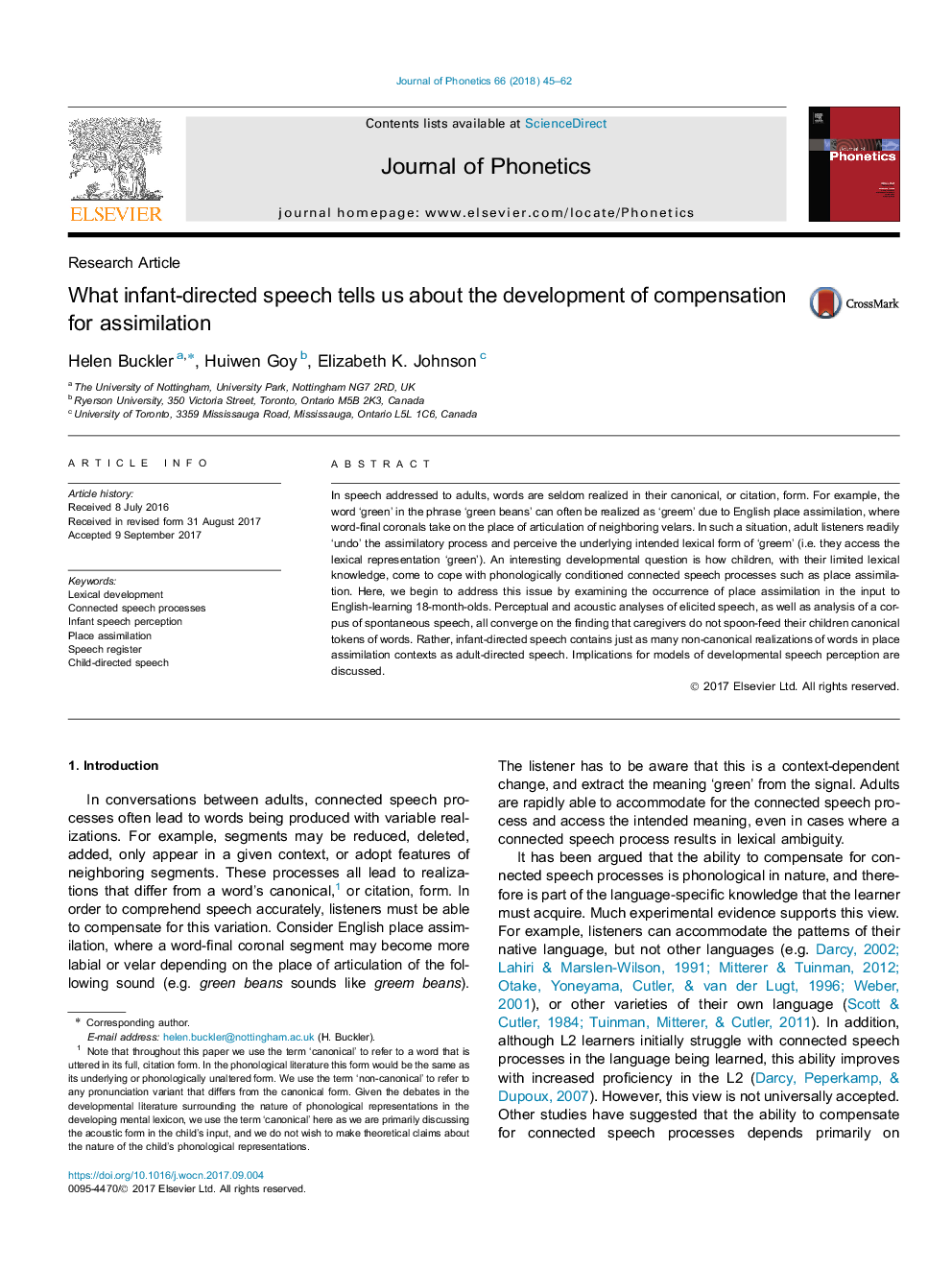| Article ID | Journal | Published Year | Pages | File Type |
|---|---|---|---|---|
| 5124047 | Journal of Phonetics | 2018 | 18 Pages |
â¢Corpus of IDS and ADS created containing many tokens that license place assimilation.â¢Tokens selected where assimilation would give rise to lexical ambiguity (e.g. cat box / cap box).â¢Perceptual judgments indicate that IDS is not less ambiguous than ADS.â¢Acoustic analyses indicate that IDS does not contain more canonical forms than ADS.â¢Analysis of corpus of spontaneous IDS supports findings of elicited speech data.
In speech addressed to adults, words are seldom realized in their canonical, or citation, form. For example, the word 'green' in the phrase 'green beans' can often be realized as 'greem' due to English place assimilation, where word-final coronals take on the place of articulation of neighboring velars. In such a situation, adult listeners readily 'undo' the assimilatory process and perceive the underlying intended lexical form of 'greem' (i.e. they access the lexical representation 'green'). An interesting developmental question is how children, with their limited lexical knowledge, come to cope with phonologically conditioned connected speech processes such as place assimilation. Here, we begin to address this issue by examining the occurrence of place assimilation in the input to English-learning 18-month-olds. Perceptual and acoustic analyses of elicited speech, as well as analysis of a corpus of spontaneous speech, all converge on the finding that caregivers do not spoon-feed their children canonical tokens of words. Rather, infant-directed speech contains just as many non-canonical realizations of words in place assimilation contexts as adult-directed speech. Implications for models of developmental speech perception are discussed.
